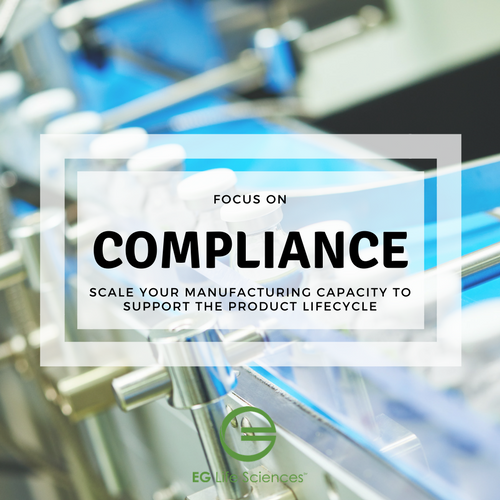Biopharma advancement is at an all-time high with breakthrough drugs and life-sustaining therapeutic treatments being developed, manufactured, and approved every day. It’s a space of incredible growth but also one that’s heavily regulated by the FDA and other global regulatory agencies. Lately, there have been so many new products showing great promise and thus scaled up from Clinical Phase 1 through Late Phase Clinical II/III up to commercial launch. Clearly, there is a vast amount of work and resources required to support this growth curve. This post introduces key topics that impact the overall product lifecycle; during the coming weeks, we will subsequently break them down into tangible, action-oriented recommendations for success!
At a high-level, the primary goal and expectation from regulatory agencies when going from the development and early phase clinical stage through subsequent phases of the product lifecycle is increased process and product knowledge as well as consistent quality systems maturity. The following is a breakdown of critical inputs & key considerations for an effective manufacturing readiness campaign:
Facility & Equipment- Is the current facility adequate to support the scale-up operations (infrastructure, equipment, personnel, etc.)?
- Is the environment controlled as necessary to support manufacturing and analytical operations?
- Will Drug Substance (DS) and Drug Product (DP) manufacturing occur in an existing GMP manufacturing space (*certified for GMP use) or will it be CMO outsourced?
- Does it have a single or multi-product facility designation?
- Are critical manufacturing and in-process testing executed per formal batch records?
- Is the current process control strategy adequate?
- Are there additional opportunities for optimization, robustness & higher yields?
- Are qualified release specifications formally defined?
- Is adequate product stability data available?
- What are the shelf life requirements?
- Are analytical methods qualified and/or validated?
- Are retesting conditions formally designed and documented?
- Are there designated and controlled areas for critical raw materials and components (i.e. inputs)?
- Are key supplier quality processes in place?
- What about inventory Control?
- Have chain of custody processes and documentation been defined?
- Is critical process equipment qualified for GMP use?
- Are validation activities executed via formally approved protocols?
- Process reliability & variability should be known prior to PV execution.
*Note: Solid understanding of product & process prior to validation
- Have cleaning processes been established?
- Will disposables be used?
- Will dedicated product contact equipment be used?
- Are adequate systems in place to demonstrate product is manufactured in a controlled manner?
- Do the quality systems and controls implemented commensurate with the level of risk being managed?
- Are they scalable?
For example:
- Formally documented Standard Operating Procedures (SOPs), Work Instructions, etc.
- Document Control
- Training
- CAPA
- Deviation/Investigation
- Non-Conformance & OOS Reporting
- Change Management
- Quality Review
- Are metrics in place and appropriate for processes being measured?
- Continuous Improvement
- Etc.
- Are processes, systems and controls implemented per a risk-based approach?
- Are there opportunities to re-assess and optimize key areas based on a solid risk rationale?
- Does the current workforce have the expertise to support a GMP/Commercial manufacturing effort?
- Is there effective training & cross-functional knowledge transfer?
These areas not all inclusive but rather a summation of key considerations when making the transition from early phase drug manufacturing to larger scale manufacturing capacity in order to support Phase II/III of the product lifecycle. There are significant levels of detail that go into each of these inputs as well as a well-planned chemistry manufacturing control (CMC) strategy. Hopefully, this initial blog provides insight into keys areas of consideration when planning a manufacturing readiness campaign. As industry veterans are aware, “the devil is in the details.”
The drug product lifecycle is iterative by nature and includes multiple phases of analysis, design, control, and implementation to get to the finish line (i.e. commercial launch)! CMC strategy often becomes the “limiting factor” in bringing a drug through the pipeline and to the commercial market. We look forward to sharing effective strategies to streamline that process in this upcoming multi-segmented blog series.
Do you have specific questions related to scaling your manufacturing capacity? We’d be happy to help. Contact us at: info@eglifesciences.com.